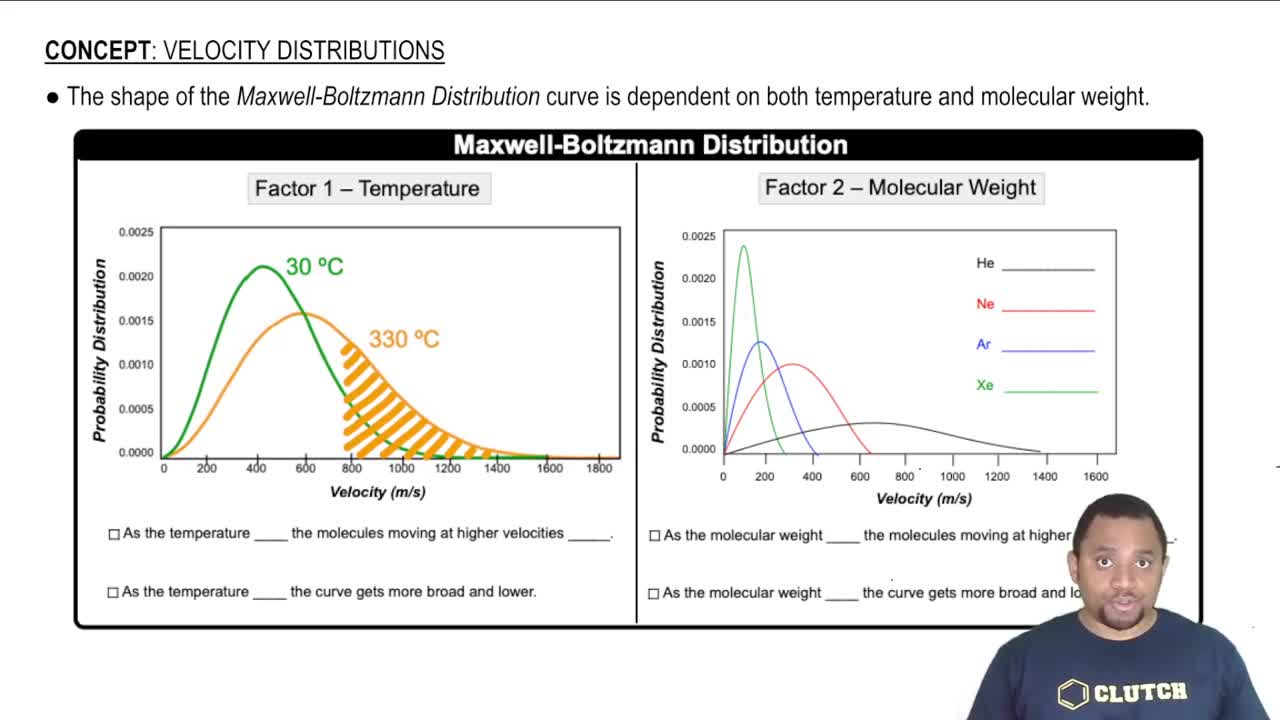Here are the essential concepts you must grasp in order to answer the question correctly.
Microstates
Microstates refer to the specific configurations or arrangements of particles in a system that correspond to a particular macroscopic state. The number of microstates is crucial in determining the entropy of a system, as higher entropy indicates a greater number of possible microstates. Understanding microstates helps in analyzing how changes in conditions, like temperature or phase, affect the system's disorder and energy distribution.
Recommended video:
Temperature and Energy Distribution
Temperature is a measure of the average kinetic energy of particles in a system. An increase in temperature generally leads to greater energy distribution among particles, allowing them to occupy a wider range of microstates. This increased energy can enhance the system's ability to explore different configurations, thereby increasing the number of available microstates.
Recommended video:
Phase Changes
Phase changes, such as the transition from liquid to gas, significantly affect the number of microstates. In a gas, particles are more dispersed and have greater freedom of movement compared to a liquid, resulting in a much larger number of accessible microstates. This transition typically leads to an increase in entropy, reflecting the greater disorder and variety of arrangements in the gaseous state.
Recommended video:
 Verified step by step guidance
Verified step by step guidance

